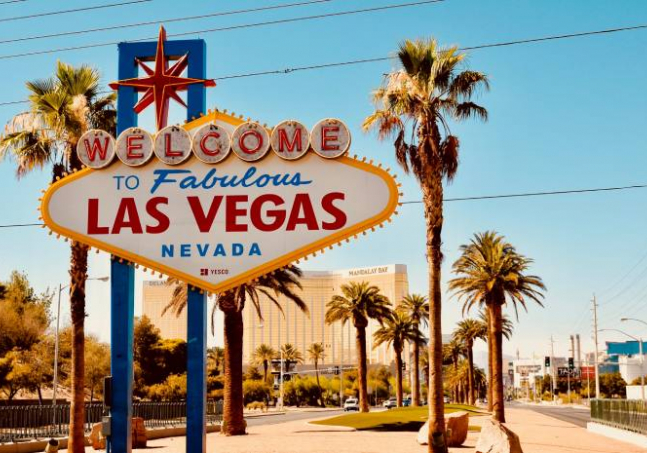Las Vegas is very present in our collective imagination as one of those places on earth where games, lights, excess, and luxurious settings are the norm. In reality, things are a little bit more complex than this, and in this article, you will learn all about it.
From the foundation and development of the city until the present day, this article will give you an overview of the touristic landscape in Las Vegas. So if you always wanted to go and would like to know more about it, dive into this read and learn all you need to know about the city of Las Vegas.
How and When Was Las Vegas Founded?
Las Vegas is the 25th most populous city in the United States and the most populous city in the state of Nevada. Many native tribes occupied the territory throughout history, as signs of human passage have been found in that area, dating back to at least 10,000 years ago. But to remain focused on Las Vegas for what it is today, you must find more recent foundations.
Normally, the establishment of the settlement is attributed to a young Mexican scout named Rafael Rivera, who was the first non-native American to encounter the valley back in 1829. After that, a trader named Antonio Armijo led a 60-man party there, as well as John C. Fremont, who wrote extensively about that area and helped other pioneers find it.
The Actual city of Las Vegas was founded in 1905 when 110 acres of land next to the Union Pacific Railroad tracks were decided to become the downtown area. 1931 is often remembered as one of the most important years for Las Vegas, as that was the year in which Nevada legalized casino gambling and reduced residency requirements for divorce to six weeks. This liberal way of thinking lured many people there and ultimately increased the popularity and reputation of the city.
Together with that, the beginning of the construction of the Hoover Dam definitely helped as well. Actually, the constant flux of people and the construction pace helped Las Vegas avoid economic struggle even during the Great Depression.
This history also helps create a certain allure to Las Vegas, and now, more than 100 years later, the city retains the same reputation and ambiance of abundance and prosperity. Let’s now move towards matters of life and tourism in Las Vegas.
Life and Tourism in Las Vegas
It might be interesting to know that Las Vegas has fewer traditional civic and cultural traditions, such as orchestras, theater companies, and public art museums when compared to other cities of the same size. To say that there is no culture in Las Vegas couldn’t be more wrong, though, as the culture of this unique place on earth manifests in rather different ways.
This said, it would be wrong to imply that there are no traditional cultural establishments in Las Vegas, as you can find the Las Vegas Art Museum, the Las Vegas Natural History Museum, the Nevada State Museum and Historical Society.
The cultural life of Las Vegas is centered around casinos and hotels, which consequently also have a certain historical weight in terms of architecture and are open to the public without charge. The unique vibe of this town is also famous in popular culture, and many games, such as Sakura Fortune, managed to pay tribute to the Las Vegas vibe thanks to aesthetics, background music, and many more aspects of the game.
Some of the oldest casinos in the city are the Golden Nugget Casino and the Caesars Palace, but in fairness, there are so many casinos in this area that you would only have too many choices.
Las Vegas is also extremely famous all around the world for its opulent and exciting nightlife. Tourists come from all over the world to catch some of the best shows in town, including music and stand-up comedy nights. Together with its wide range of entertainment options, Las Vegas has also become famous for its fine dining.
This wasn’t always the case, though, as earlier on in the history of Las Vegas, there has been a certain reputation connected to inexpensive, mediocre casino food. Now, this couldn’t be more false, as many casinos and restaurants in that area are famous for their high standards of cuisine.
The Outdoors and Challenges
Outdoor recreation is another great and yet undervalued aspect of tourism in that area. First of all, let’s not forget that near Las Vegas, you can find the Red Rock Canyon National Conservation Area and the Lake Mead National Recreation Area. You can also find three different state parks: Spring Mountain Ranch, Floyd Lamb, and the Valley of Fire.
Because of its climate, Las Vegas is not often linked to more wintery activities such as skiing, but if you love this kind of sport, you will be pleased to know that skiing is indeed available during the winter season in the Spring Mountains.
As in every big city, Las Vegas also brings some challenges to the table, which you should be aware of before visiting. One of the most striking challenges of Las Vegas is the air quality. This comes from the ever-present use of engines and incessant construction, as well as the commercial and industrial enterprises which also contribute to air pollution. Goes without saying that traffic is another big problem in Las Vegas, which is not exactly a walkable city.
There are other issues related to Las Vegas, such as some less-safe areas that you should be aware of or the lifestyle of some members of the community, which should also be taken into account before visiting. This article gave you an overview of Las Vegas, its history, territory, development, and lifestyle. Las Vegas is a city full of history and potential, and it is considered a forever destination by many people who love the thrill of a good game and the excitement of a night out.










.jpg)



 pays out over $37 million to Ontario municipalities in 2nd quarter.jpg)



How does it work?
Locate and discover worldwide casinos
Find their promotions, events and enjoy exclusive deals
Good luck!